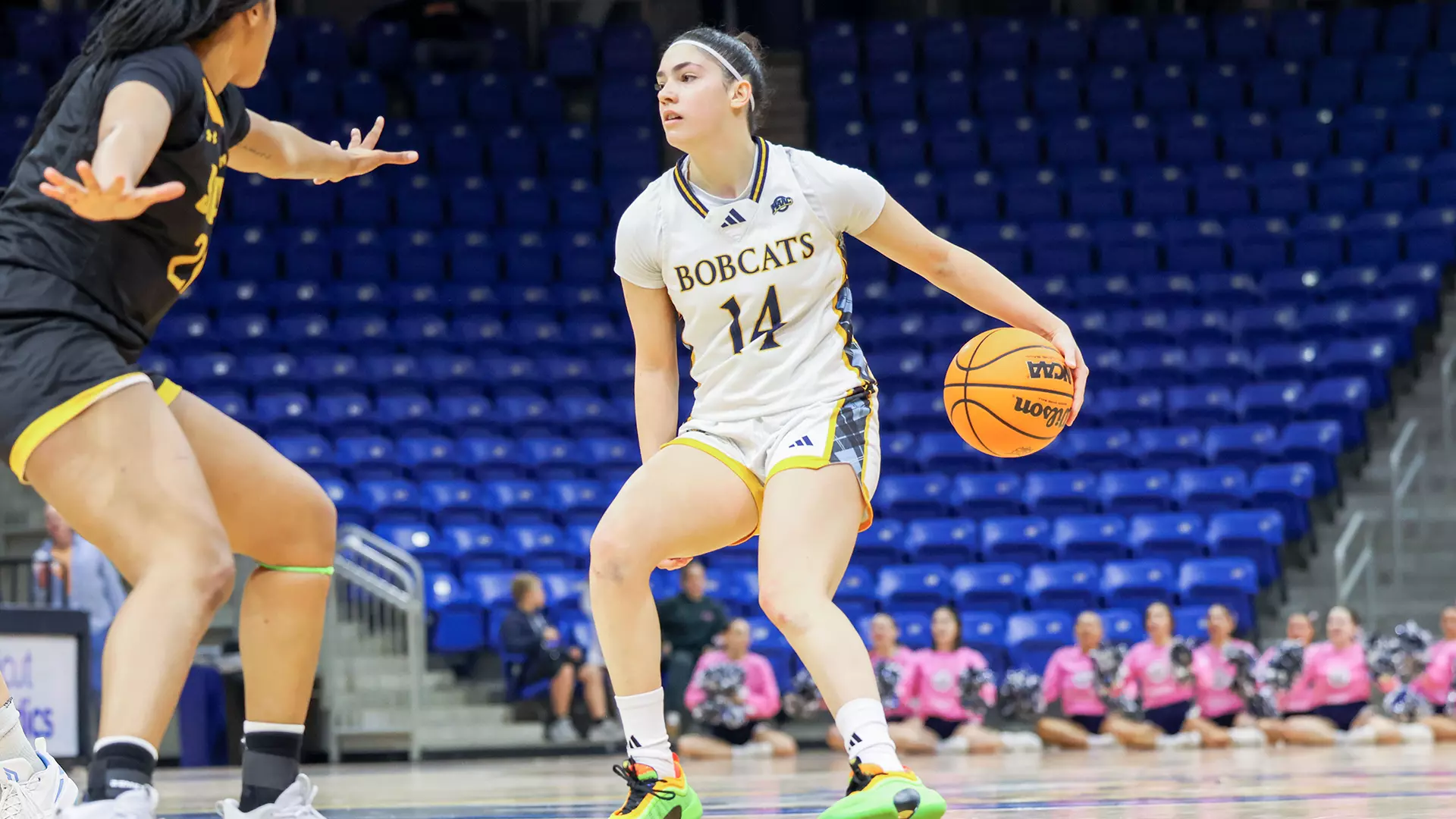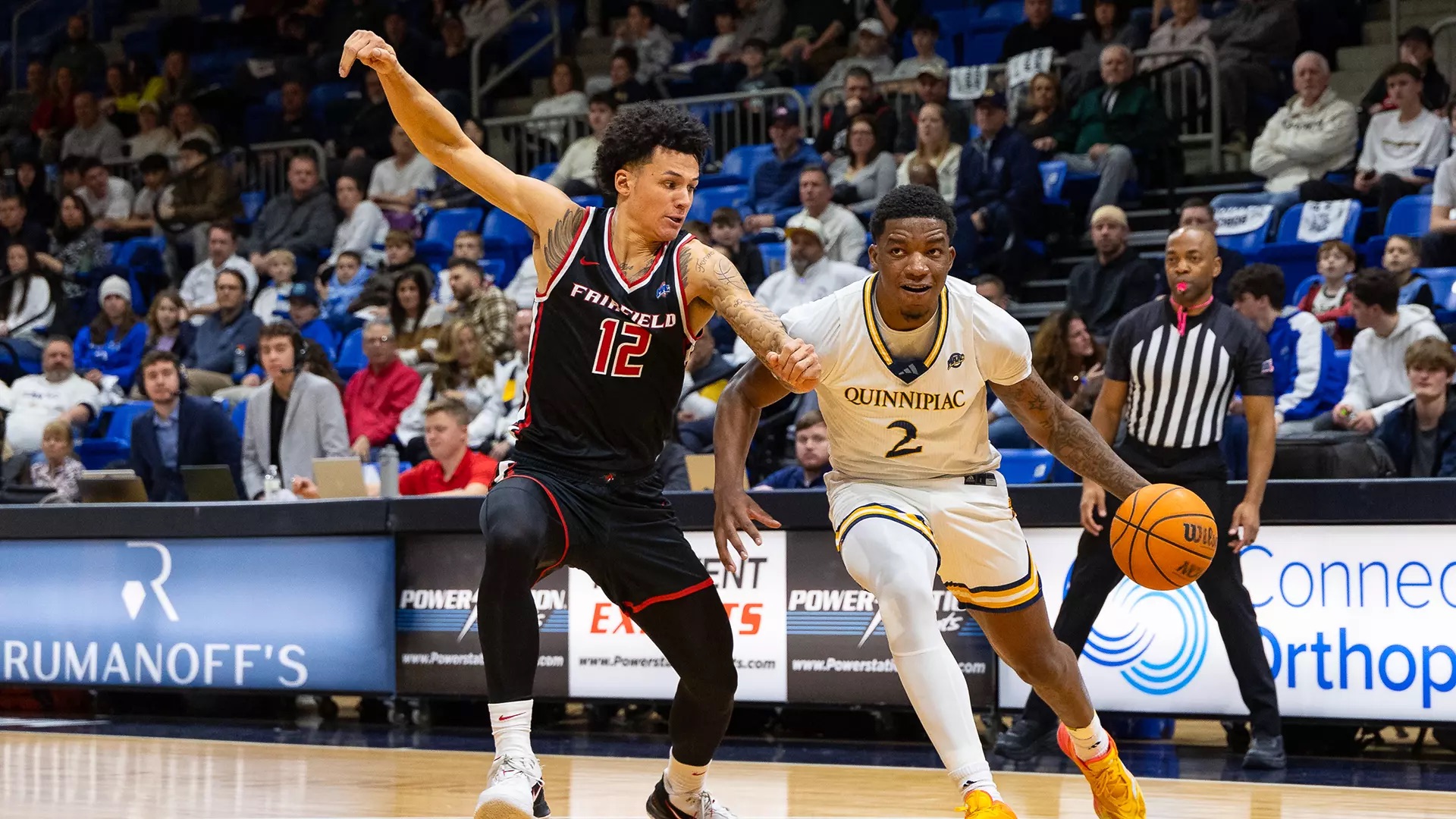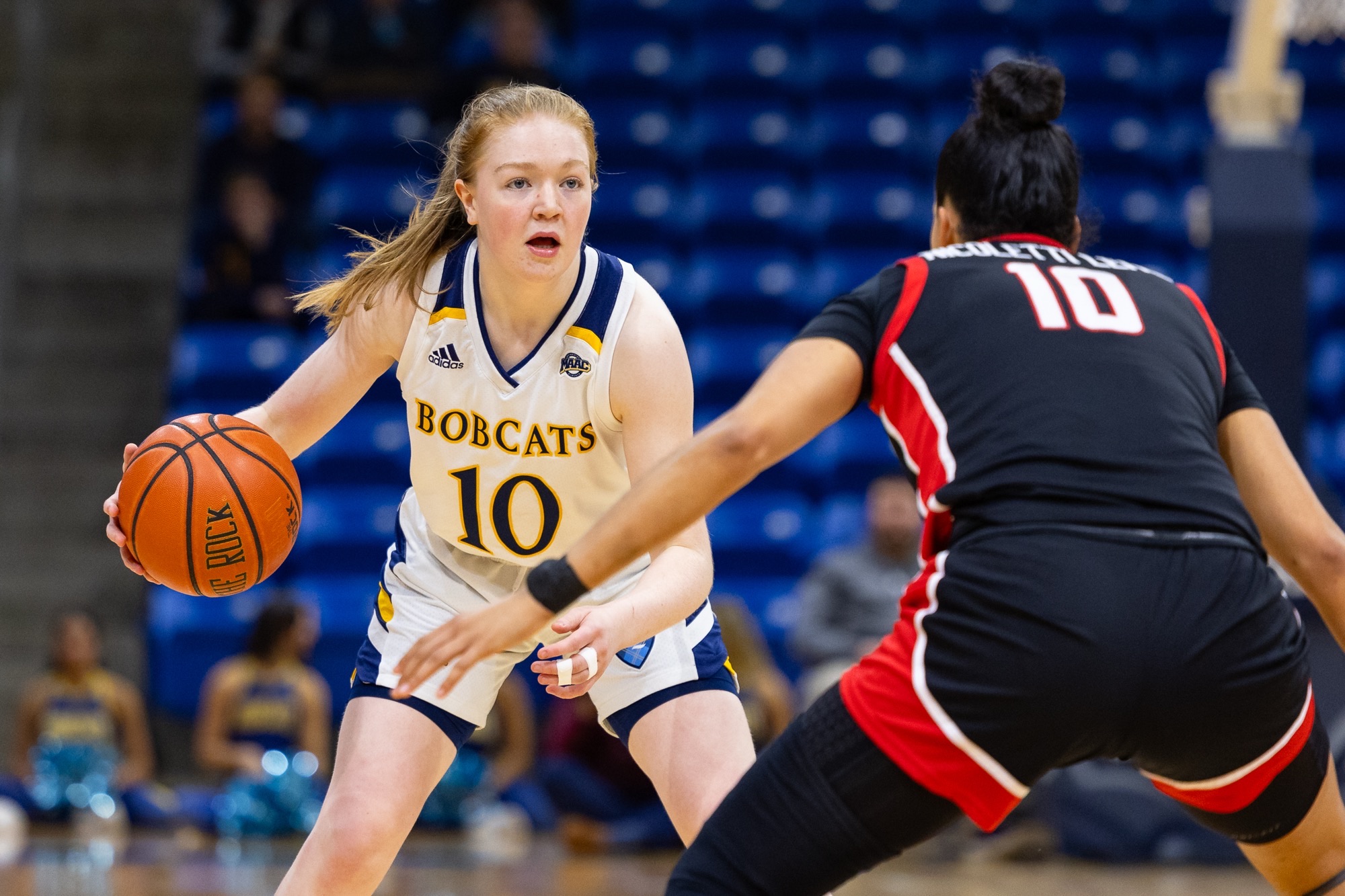By Connor Coar & Benjamin Yeargin
Quinnipiac women’s basketball went 1-1 this past weekend. But it isn’t an ordinary 1-1 for the Bobcats; they played MAAC No. 1 Fairfield on the road and No. 4 Siena at home. Quinnipiac lost to the Stags 72-63, but rebounded for a close 77-74 win over the Saints.
“Even before Fairfield, we knew this was a big weekend,” sophomore forward Anna Foley said Saturday.
The games told us a lot about who the Bobcats are, and what they can become in the MAAC Tournament. QU Sports Page’s Connor Coar and Benjamin Yeargin offered analysis on the team’s performances in both games.
If you want to eat with the big dogs, you have to fight like there is no tomorrow
Coming into an opposing team’s building and trying to steal a win is never an easy task, especially when it is a team that has won 32-straight conference games dating back to last season.
Fairfield has been a juggernaut the last two seasons. Last season, the Stags had beaten teams by 17.3 points. That is just a few points down from the 20.2 they are beating teams by this season. Quinnipiac did not fall into that average, only losing by nine points.
Head coach Tricia Fabbri emphasized one factor before the game: defensive transition and forcing Fairfield to play a majority of the game in the halfcourt.
Fairfield has 10 players who average over 15 minutes per game. This allows the team to play fast, have more fresh legs and get more possessions that they may not get with a shorter bench.
“They throw a lot of bodies at you,” Fabbri said Wednesday ahead of Thursday’s game. “There’s also a real theme that each player wants to do. So it is going to be really predicated upon that.”
When the first quarter began, the five starters for Fairfield were tormenting Quinnipiac, on both sides of the ball. The Stags opened the game up on a 10-0 run through the first five minutes, forcing Fabbri to call a timeout.
After the full timeout was finished, the Bobcats went on a 6-0 run in large part to the inside play of Ella O’Donnell.
Coming off of the bench, O’Donnell’s six points of the entire night in the first quarter. The only other player to come off the bench and score was Grace LaBarge, scoring in double figures for the first time she had scored in double figures since Jan. 2 up to that point.
Outside of the two forwards, there was zero production offensively against a team that was in the top 10 in Division I scoring defense going into the game – allowing only 53.2 points per game as of publication.
As the game wore on, Quinnipiac handled Fairfield’s pressure better, but the amount of effort that the team had to produce was not sustainable for the entire game.
Guards Gal Raviv and Jackie Grisdale combined for 78 minutes Thursday, something not out of the ordinary for the two. Both are in the top 10 in minutes in Division I, the only set of teammates that can say that.
Throughout the season though, they never faced that much “grit,” as Fairfield’s head coach Carly Thibault-Dudonis said postgame.
“That is something that we have always hung our hat on,” Thibault-Dudonis said. “We have had so many people step up throughout the course of the game. You could look all the way down [the roster].”
Raviv was picked up 94 feet most of the three quarters, which sped up the game and forced the Bobcats to commit 18 turnovers – Raviv having five of them. That’s the second-most turnovers all year, second to the 21 committed against Mount St. Mary’s on Jan. 18 – one of their three losses this year.
“We did have some turnovers trying to get it inside, and they capitalized,” Fabbri said.
Quinnipiac is a good team – there is no denying that. But as this weekend showed, there needs to be steps taken with the bench production, ability to handle pressure like Fairfield gave and taking ownership of the defensive and offensive assignments. that don’t always show up on the stat sheet.
– Connor Coar
Individual greatness, but a lack of collectiveness against Siena
Raviv’s 21 points wasn’t enough to propel Quinnipiac to a win at Fairfield on Thursday night. But a career-high 32 was enough Saturday afternoon.
The Israel native shot 9-17 from the field, 4-4 from three and 10-12 at the line en route to 32 points, a career high. This is the fourth time this year that Raviv topped her career high in points and this performance puts her among the best single-game scoring performances in program history. Oh, she also had eight assists and seven rebounds, just shy of a triple-double.
“She’s so fearless,” Fabbri said. “She’s so confident in her abilities.”
Whatever defensive plan that Siena had for Raviv — which appeared to be switching between length in senior guard Anajah Brown and agility in graduate guard Ahniysha Jackson — didn’t work. Raviv saw there wasn’t a concrete plan, and took advantage of it.
“You can see when someone is scared, and I feel like some of them were scared to guard me,” Raviv said.
Raviv gives good reason for opponents to be scared to guard her. If you contest her with length, she easily creates separation and will shoot over whatever wingspan is in front of her. If you defend her with a guard, she can beat them to the basket, mid-range and knock down her threes.
For whoever is making the game plan against Quinnipiac, it’s hell trying to figure out how to defend Raviv. But fortunately, as of late that’s all who they’ve had to worry about.
Over the weekend, only Raviv and Foley (14 points on Saturday) eclipsed 14 points. Foley averaged 11.5 points per game over the two games, and senior forward Grace LaBarge put up a respectable 11 points per game too.
But two of the three staples of Quinnipiac’s backcourt did not produce this weekend. Senior guard Jackie Grisdale put up back-to-back eight-point performances and shot a measly 3-11 from three. Sophomore guard Karson Martin had nine and five points, respectively.
That’s been the Bobcat’s biggest weakness this year. They have had amazing individual performances — Grisdale’s 33-point outburst against Harvard, for example, — but they rarely have played as a team.
“I’d like to see us collectively get there, and then we’ll be up and running for the next six weeks to close out the season,” Fabbri said.
Individual performances can lift Quinnipiac over most of the MAAC, but those alone won’t help them hurdle Fairfield. If the Bobcats want to win the MAAC Championship and start to win their games comfortably, they need collectiveness. Raviv can carry them far, but they won’t make the promised land without a whole team effort.
– Benjamin Yeargin



